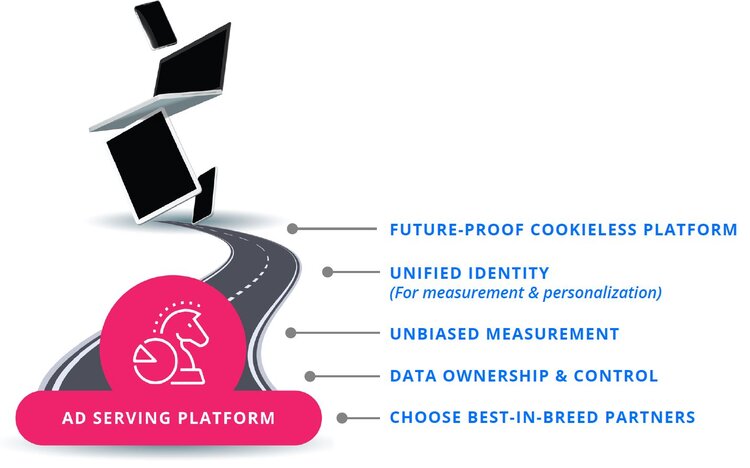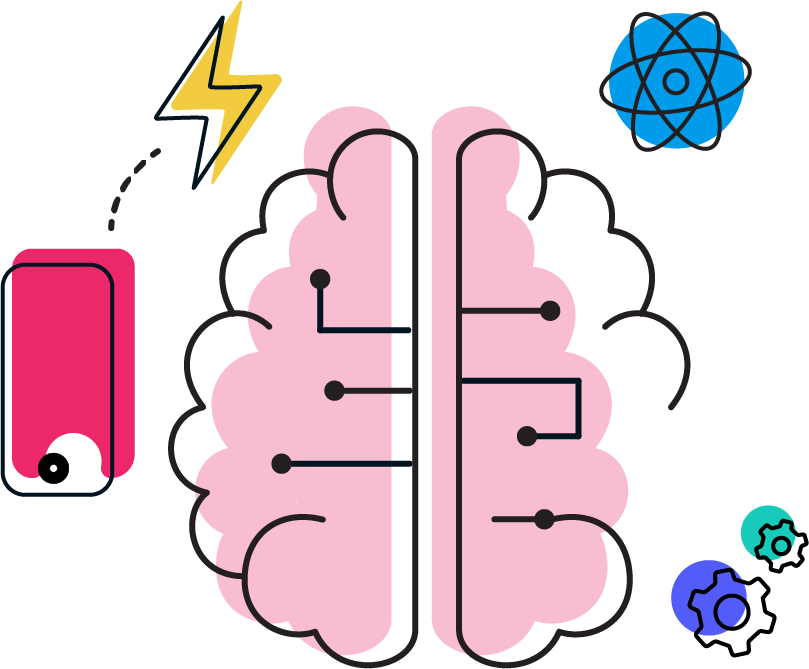


Identity underpins every aspect of the campaign lifecycle, with cookies and MAIDs currently serving as the backbone.
Onboarding & Activation:
Converting your offline PII to cookies (today)—or other forms of online identifiers (2022+)—and activating through a buying platform.
Prospecting & Retargeting:
Targeting high-performing audiences, including third-party data segments, look-alikes, and site retargeting, most all of which rely on cookies and MAIDs.
Creative Personalization:
Like media buying platforms, dynamic creative solutions use many of the same data signals to decision creative. Some of these triggers (e.g. geo, dayparting) do not rely on cookies, but many others (e.g. sequencing, A/B tests, remessaging) do.
Measurement & Attribution:
Determining whether your campaigns are working or not. With cookie rejection running at 70% today—and soon to be 100%—it is simply impossible to measure accurate reach, frequency and attribution without an alternative to the cookie.

To date, most of the focus and attention have been on the buy side: data onboarding & activation and prospecting & retargeting. However, once the buy-side ecosystem players launch their solutions, advertisers will be left with gaping holes around how to personalize creative and measure the effectiveness of campaigns that span multiple ID spaces.
ENTER THE AD SERVER
The ad server is the logical solution to this problem. The ad server is ad tech’s version of “the last mile” to the consumer. As the ultimate delivery vehicle of the actual ad impression, the ad server is the last platform within the tangled web of ad tech to touch the end customer when an ad is delivered.
As a result, it is the ad server that becomes the advertiser’s linchpin for joining identity and campaign data at both the user and impression level. The ad server can use the available identity information to personalize the message at each impression and stitch together disparate IDs across the Identityscape for performing customer journey analytics.
However, for the ad server to realize its strategic potential, it must meet specific requirements:
Provide unified identity across ID spaces for measurement and personalization
Provide unbiased measurement (reach, frequency and attribution) in the absence of media-buying conflicts
Enable advertisers to exercise ownership and control over their campaign data
Enable advertisers to work with best-in-breed partners of their own choosing
Support a future-proof platform that functions without cookies, including creative personalization and measurement

Of the three leading ad servers, the only one that meets these requirements is the one that sits outside the walled gardens: Flashtalking.
In case you missed it, read our last blog post in this series: Part 2: The Identityscape 2022.
In our next blog post in this series, Part 4: Flashtalking Identity Framework, we will introduce the foundation for our cookieless ad serving platform.







